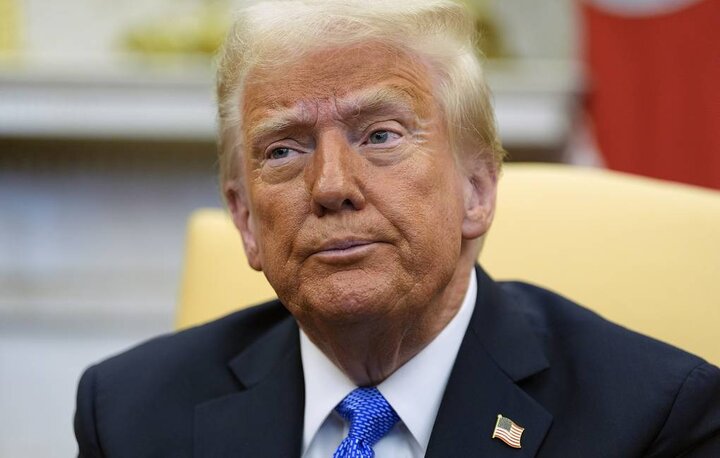100 stormy days; how did Trump’s domestic and foreign policy fare during this period?
With the arrival of April 29, 2025 Donald Trump’s second administration entered its 100th day; a period that has been accompanied by extensive changes and rapid actions in both domestic and foreign spheres.
In the domestic sphere, Trump took an authoritarian approach to a massive purge of the federal bureaucracy, tightened immigration policies, and implemented controversial economic programs, which put the domestic economy in a turbulent phase.
In the field of foreign policy, while maintaining the slogan of “America First” and exerting more pressure on China, he began indirect negotiations with Iran, made military aid to Ukraine conditional, and planned ambitious projects to form an empire and expand American influence in the Western Hemisphere.
Dimensions of Trump’s domestic policy in the first 100 days
The most important issues related to Trump’s domestic policy in the first 100 days of his presidency include the mass dismissal of federal employees, the intensification of immigration policies, and the financial and livelihood crisis.
1. Massive purge of federal employees and loyalty requirement
In one of the most controversial actions of his first 100 days, Donald Trump launched a sweeping purge of the federal government. Using a new executive order, he created a new job classification that gave the president the power to easily fire or replace federal employees in management and decision-making positions who were not aligned with government policies.
The move led to the firing or removal of thousands of employees in agencies such as the Department of Justice, the State Department, the Department of Education, and even the intelligence agencies. The administration made it clear that employees’ retention in key positions would now be contingent on their commitment to the president’s agenda, not just their professional record or ability. To stay in sensitive positions, employees had to formally declare their support for the administration’s policy directions.
2. Immigration Intensification and Unprecedented Border Tightening
At the start of his second term, Trump made immigration a central focus of his domestic policy. He immediately revived the border wall with Mexico with more funding, promising that this time the project would be completed “without compromise.” Thousands of new border security forces were hired, and surveillance technology such as drones and thermal cameras was deployed along the border.
At the same time, asylum policies became more restrictive. Trump issued a new executive order that required asylum seekers to wait in a safe third country for a decision, effectively delaying their admission to the United States for months or years. Many asylum seekers who had previously been allowed to enter the United States were now stuck in border countries such as Mexico or Guatemala. In addition, the annual refugee admission capacity was reduced to its lowest level in decades.
3. The Shadow of a Tariff War on the US Economy and Financial Markets
At the start of his second term, Trump unleashed a wave of economic optimism by announcing new tax cuts and policies to encourage domestic production. Corporate tax cuts, easing business regulations, and granting special privileges to manufacturing industries caused employment rates in industrial sectors to increase and stock market indices to temporarily jump.
But in parallel with these policies, Trump imposed heavy tariffs on imports of goods from about 70 countries around the world, including China, Mexico, Canada, and even some European partners. These tariffs, which were supposed to support domestic industries, quickly increased the cost of importing raw materials for American factories. The automotive, agricultural, and electronics industries were particularly affected by this policy, facing increased production costs and reduced competitiveness.
It did not take long for these pressures to spread to the broader US economy. Consumer goods prices began to rise, and inflation rose beyond expectations. Farmers have lost export markets as China retaliated with tariffs, and a wave of bankruptcies has hit some rural areas. The policies have also angered big companies and trade unions, with many warning that the tariffs are effectively a hidden tax on American consumers.
Trump has also set records in financial markets. He has added the worst 100-day start for the U.S. stock market since the 1970s to his list of negative records in the White House. The S&P 500 has fallen 7.9 percent since Trump was inaugurated on Jan. 20 and is now down 100 days, a few days before his 100th day in office. The index is one of the best gauges of the overall health of the U.S. stock market. That’s better than only Richard Nixon’s 9.9 percent drop in the first 100 days of his second term in 1973.

